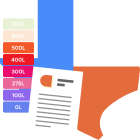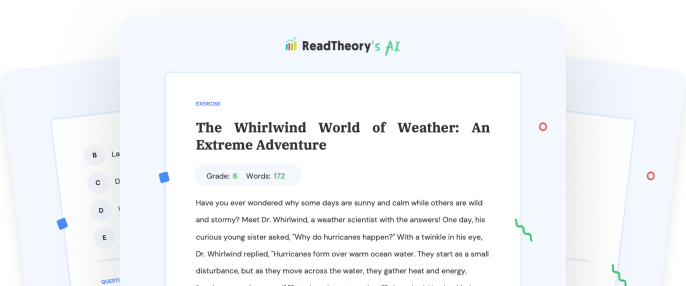Transform Your Teaching
with AI-Powered Worksheets
With ReadTheory’s Instant Worksheet Builder, you can create engaging, grade-appropriate worksheets tailored to your students in minutes. Spark curiosity, save time, and empower critical thinking with AI-powered tools designed for teachers like you.


The Future is Green: A Peek into Sustainable Housing
Have you ever heard of sustainable housing? It's a type of building designed to be environmentally friendly. These houses use less energy, water, and other resources than regular ones. Cool, right? Imagine a house with a roof full of solar panels, collecting sunlight to power lights and appliances. Or a house that collects rainwater, using it to water plants or flush toilets. These are examples of sustainable housing. But why should we care about sustainable housing? Well, our planet has a limited amount of resources. By living in a sustainable house, we can help to save these resources for future generations. The best part is, you don't need to live in a sustainable house to make a difference. You can turn off the lights when leaving a room, take shorter showers, or recycle. Small actions can create big changes. After all, the future is green!
Question 1
What is a benefit of sustainable housing according to the text?
They require more energy than regular houses
They use less resources such as energy and water
They are larger than regular houses
They are more expensive than regular houses
Question 2
What is one example of sustainable housing mentioned in the text?
A house with a swimming pool
A house with large windows
A house with a roof full of solar panels
A house with a garage for two cars
A house with a large backyard
Question 3
Why should we care about sustainable housing?
Because it looks modern
Because it's a popular trend
Because our planet has a limited amount of resources
Because it's usually bigger
Because they are usually in good neighborhoods
Question 4
What is a small action we can take to contribute to sustainability, according to the text?
Buy a bigger house
Drive more
Use more water
Take longer showers
Turn off the lights when leaving a room
Question 5
True or False: We need to live in a sustainable house to make a difference.
True
False
Only on weekends
Only in big cities
Only if we use a lot of electricity
 or share via
or share via

Assign the ReadTheory pretest to determine students' reading levels.

Why Teachers Love
Instant Worksheet Builder?

Tailored Content for Every Student
Craft worksheets with passages and multiple-choice questions customized to your chosen topic and grade level, ensuring relevance and engagement.

Save Hours
of Prep Time
Our AI, Lexi, generates complete worksheets—passages, questions, and answers—in minutes, freeing you to focus on teaching, not planning.

Standards-Aligned Learning
Every worksheet is designed to boost reading comprehension and critical thinking, aligning seamlessly with State Standards to help your students shine.
Personalized teaching
for personalized learning
Browse worksheets created and refined by educators using Lexi—your source for inspiration and ready-to-use resources.


ReadTheory is free for Teachers to use.
Join thousands of educators using ReadTheory for free. Sign up today and start creating in just minutes!





